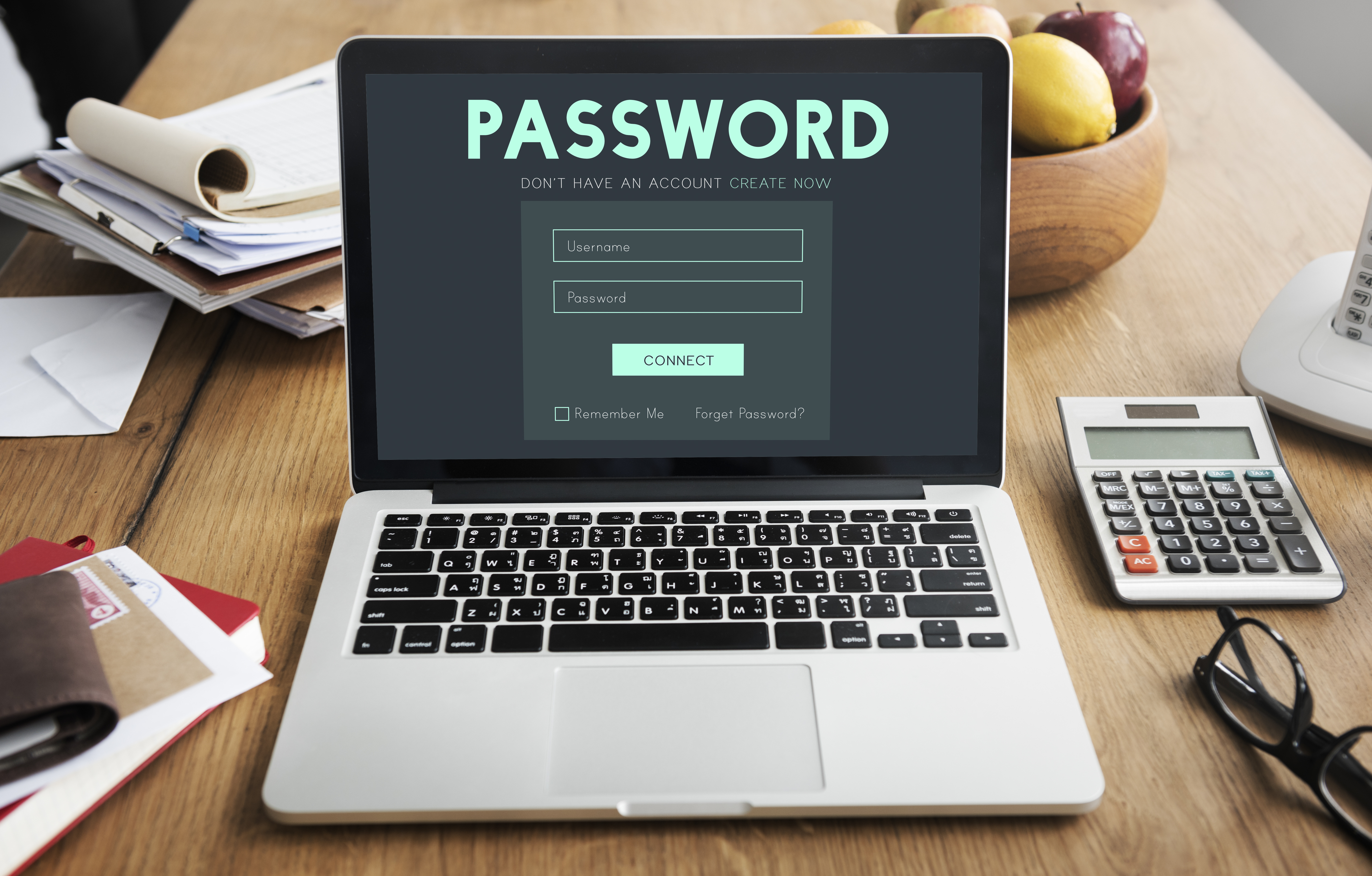The Password Fatigue Crisis: Why We're All Drowning in Credentials
TL;DR Summary
The Bottom Line:
The average person now manages 255 passwords—a 70% increase since 2020 (NordPass 2024). This impossible cognitive burden forces 85% of people to reuse passwords, making credential stuffing attacks succeed at scale. Nearly half of all users had passwords stolen in 2024. Password fatigue isn't laziness—it's a predictable human response to a broken authentication system.
Key Takeaways:
- 255 passwords per person vs. human memory capacity of 7±2 items
- 85% reuse passwords because there's no practical alternative
- 26 billion credential stuffing attempts monthly exploit this reuse
- $4.5M average breach cost plus $480/year per employee in lost productivity
- Gen Z suffers most despite being "digital natives" (72% reuse vs. 42% Boomers)
- Solutions exist that are both more secure AND more convenient than passwords
What to do now: Use a strong password generator for your most important accounts, enable MFA where available, and prepare to migrate to passwordless authentication. Read on for the complete data and actionable solutions.
You're not alone. You're experiencing password fatigue—and it's not just inconvenient. It's a full-blown security crisis affecting billions of internet users worldwide, costing businesses millions, and fundamentally breaking the way we access the digital world.
📚 THE PASSWORD FATIGUE SERIES
- Part 1: The Crisis (You Are Here)
- Part 2: Immediate Solutions →
- Part 3: The Passwordless Future →
What is Password Fatigue?
Password fatigue is the cognitive and emotional exhaustion that comes from creating, remembering, and managing hundreds of unique passwords across countless digital accounts. It's the mental breaking point where security requirements exceed human capability.
Here's the stark reality: The average person now manages 255 passwords—168 for personal accounts and 97 for work (NordPass 2024 Survey). That's a 70% increase since 2020, with no signs of slowing down.
Password fatigue manifests in three distinct ways:
- Cognitive Load: Your brain simply cannot store 255 unique, random passwords. Working memory capacity is limited to about 7±2 items. We're asking people to remember 36 times more than the human brain can handle.
- Behavioral Adaptation: When faced with impossible demands, people adapt—usually in ways that compromise security. They reuse passwords, choose predictable patterns, write credentials on sticky notes, or simply give up and click "forgot password" every single time.
- Emotional Exhaustion: The constant friction of password management creates genuine frustration and anxiety. Studies show people find password problems more annoying than losing their car keys.
Quick Self-Assessment: Do You Have Password Fatigue?
Check all that apply:
The Numbers Don't Lie: 2025 Statistics
The data paints a disturbing picture of a digital authentication system in crisis. These aren't abstract numbers—they represent real security vulnerabilities affecting billions of people every day.
The Scale of the Problem
These numbers reveal a fundamental mismatch between human capability and digital demands. We've created a system that requires the average person to memorize 255 unique, complex strings—a cognitive task that's simply impossible without technological assistance like a secure password generator.
The Behavior Crisis
When systems demand the impossible, people find workarounds. Unfortunately, these adaptations create massive security vulnerabilities:
- 59% of people use birthdays and names in their passwords—information readily available on social media
- 55% abandon accounts rather than going through password reset processes
- 92% know password reuse is risky but do it anyway because they have no practical alternative
- 23% share passwords with colleagues, friends, or family members
This isn't laziness or ignorance—it's a predictable human response to an unworkable system. People aren't failing passwords; passwords are failing people.
The Security Consequences
Password fatigue doesn't just create inconvenience—it generates massive security vulnerabilities that attackers actively exploit:
- 24 billion credentials were compromised and circulating on the dark web as of 2022
- Stolen credentials were the #1 attack vector in both 2023 and 2024
- 0.1-2% success rate on credential stuffing attempts—which sounds low until you multiply it by billions of attempts
- 3,000+ data breaches in 2024 alone, exposing hundreds of millions of additional accounts
How Credential Stuffing Works
Hackers obtain username/password combinations from a data breach at Company A. They use automated tools to try those same credentials at Companies B, C, D, and thousands of others. Because most people reuse passwords, attackers gain access to multiple accounts from a single breach. Recent victims include Snowflake, Roku, and Amtrak in 2024 alone.
Defense: Use unique passwords for every account. Our free password generator makes this easy by creating strong, random passwords instantly. For comprehensive password management, consider our password manager comparison guide.
The Financial Impact
Password fatigue carries staggering costs for both individuals and organizations:
- $4.5 million: Average cost of a data breach in 2024 (IBM Security Report)
- $480 per year per employee: Lost productivity from login-related delays and password resets (Ponemon Institute Study)
- $6 million per year: Average business losses from credential stuffing (application downtime, lost customers, IT costs)
- 20-50% of help desk calls: Are password-related, consuming valuable IT resources (Gartner Research)
Real-World Impact: Sarah's Story
Sarah, a marketing manager at a mid-sized company, spends an average of 15 minutes daily dealing with password issues—locked accounts, forgotten credentials, required resets, and helping colleagues with their login problems.
That's 65 hours per year—over 1.5 full work weeks—just dealing with password friction. At an average hourly rate of $35, that's $2,275 in lost productivity. Multiply that across an organization, and the costs become staggering.
Why This Is Happening: The Root Causes
Password fatigue isn't accidental—it's the inevitable result of several converging factors that have created a perfect storm of authentication dysfunction.
1. Digital Account Explosion
The number of digital accounts the average person manages has skyrocketed:
- 2020: ~150 passwords per person
- 2024: 255 passwords per person
- 2030 projection: 400+ passwords at current growth rates
Every service now requires authentication—streaming platforms, shopping sites, work applications, healthcare portals, utility companies, delivery apps, fitness trackers, smart home devices, and countless others. Each new account adds another credential to remember.
2. Contradictory Password Policies
Different sites enforce wildly different requirements, making it impossible to develop a consistent mental model:
This inconsistency means you can't develop a single password strategy that works everywhere. The password that works perfectly for your bank gets rejected by your email provider. The complex password you created for work violates your insurance portal's character restrictions.
3. Human Memory vs. Machine Demands
The math simply doesn't work:
- Human working memory capacity: 7±2 items (well-established cognitive science)
- Number of passwords required: 255 unique, random strings
- The gap: Asking humans to remember 36 times more than cognitive capacity allows
No amount of "trying harder" can overcome this fundamental limitation. Humans evolved to remember faces, places, stories, and patterns—not hundreds of random alphanumeric strings designed to be un-memorable.
4. Outdated "Best Practices"
Many password requirements we take for granted are based on outdated or misunderstood security guidance:
The NIST Reversal
Bill Burr, the author of NIST's influential 2003 password guidelines, later admitted that much of his guidance was wrong. Those recommendations—complexity requirements, regular password changes, special character mandates—actually made security worse, not better.
Forced complexity leads to predictable patterns: "Password1!" becomes "Password2!" then "Password3!" Regular forced changes encourage minor variations rather than truly new passwords. These policies increase fatigue without improving security.
Despite NIST updating their guidelines in 2017 and again in 2024, many organizations still enforce these counterproductive policies.
5. Misaligned Security Incentives
The people who create password policies (security teams, compliance officers) don't experience the daily friction those policies create. Meanwhile, the people suffering from password fatigue (users, employees) don't face consequences when they choose convenience over security.
This creates a system where:
- Security teams optimize for theoretical security, not practical usability
- Users optimize for convenience, accepting security risks they don't fully understand
- Organizations blame "lazy users" rather than examining system design
- Breaches happen to everyone except the policymakers
6. The Illusion of Memorability
Password requirements often create an illusion of security while actually reducing it:
- Adding "1!" to a password feels like it increases security but creates predictable patterns
- Replacing letters with numbers ("Password" → "P@ssw0rd") is easily cracked by modern tools
- Forcing changes every 90 days leads to "Spring2024!" → "Summer2024!" → "Fall2024!"
- Complexity requirements encourage people to write passwords down
These "secure" passwords give users a false sense of protection while remaining vulnerable to both automated attacks and human error. Instead, use a password generator to create truly random, unpredictable passwords.
The Real-World Impact: Beyond Inconvenience
Password fatigue isn't just annoying—it creates cascading consequences that affect security, finances, operations, and even mental health.
Security Vulnerabilities
Password fatigue directly enables the most common attack vectors:
- Credential stuffing success: Attackers exploit password reuse, knowing that credentials from one breach will unlock accounts elsewhere
- Weak password selection: Fatigued users choose memorable but easily guessed passwords
- Social engineering effectiveness: Password-weary users are more likely to fall for phishing emails promising to "verify" or "update" credentials
- Insider threats: Shared passwords and written credentials create multiple points of vulnerability
Operational Consequences
The organizational impact extends far beyond IT departments:
- Lost sales: 55% of users abandon purchases rather than creating another account or recovering a password
- Reduced productivity: Employees waste time on password resets, locked accounts, and authentication friction
- Delayed urgent work: Critical tasks stalled by password problems at the worst possible moments
- Customer satisfaction: Authentication friction creates negative brand experiences
Psychological & Health Impact
The mental toll of password management is real and measurable:
- Anxiety: Constant worry about forgotten passwords, breaches, and account access
- Frustration: More annoying than losing car keys, according to user surveys
- Learned helplessness: Users give up trying to follow security best practices because they seem impossible
- Decision fatigue: Password creation drains mental resources needed for other decisions
- Trust erosion: Repeated password problems damage trust in digital services
The Generational Divide: Why Digital Natives Struggle Most
Counterintuitively, younger generations suffer more from password fatigue despite growing up digital:
Why do digital natives struggle more?
- More accounts: Gen Z users average 320+ digital accounts vs. 180 for Boomers
- Mobile-first habits: Expecting seamless experiences makes password friction more jarring
- App ecosystem: Every service has its own app, multiplying authentication touchpoints
- Security education gap: Growing up digital doesn't mean understanding digital security
- Higher churn rate: Younger users create and abandon accounts more frequently
Digital fluency ≠ security consciousness. In fact, comfort with technology may create overconfidence while the sheer volume of accounts creates more vulnerability.
Frequently Asked Questions
The average person manages 255 passwords in 2025, consisting of 168 personal accounts and 97 work accounts—a 70% increase since 2020.
How many passwords does the average person have in 2025?
The average person manages approximately 255 passwords—168 for personal accounts and 97 for work accounts (NordPass 2024 Survey). This represents a 70% increase since 2020 and shows no signs of slowing down.
What percentage of people reuse passwords?
85% of people reuse passwords across multiple sites. While 92% know this is risky, they do it anyway because managing 255 unique passwords exceeds human cognitive capacity without technological assistance.
What is the most common password?
The most common password worldwide is still "123456," followed by "password" and "123456789." These predictable patterns persist because they're easy to remember, even though they provide virtually no security. Instead, use a secure password generator to create strong, random passwords.
How much does password fatigue cost businesses?
Password fatigue costs businesses approximately $480 per employee annually in lost productivity from login delays and password resets. Organizations also lose an average of $6 million per year to credential stuffing attacks, plus the $4.5 million average cost of a data breach.
What is credential stuffing?
Credential stuffing is when attackers take username/password combinations from one data breach and automatically try them across thousands of other websites. Because 85% of people reuse passwords, these attacks succeed at a rate of 0.1-2%—which translates to millions of compromised accounts when applied to the 26 billion monthly attempts.
Why is Gen Z more affected by password fatigue?
72% of Gen Z users reuse passwords compared to 42% of Boomers, primarily because they manage more accounts (320+ vs. 180), use more mobile apps, and create/abandon accounts more frequently. Being a "digital native" doesn't automatically mean understanding digital security best practices.
Are password managers safe?
Reputable password managers use end-to-end encryption with zero-knowledge architecture, meaning even the company cannot read your passwords. Studies show users with password managers (17%) experience less identity theft and credential theft compared to those without (32%). The key is choosing established providers and using a strong master password.
What should I do right now to reduce password fatigue?
Start by using a password generator to create strong, unique passwords for your most critical accounts (email, banking, work). Enable multi-factor authentication on these accounts. Check if your passwords have been compromised at Have I Been Pwned. You don't need to fix everything at once—start with your top 5 accounts and build from there.
Should I still change my passwords every 90 days?
No. NIST no longer recommends mandatory periodic password changes. Current guidelines state password changes should only occur when there's evidence of compromise. Research shows frequent forced changes lead to weaker passwords as users make predictable minor modifications rather than creating truly new passwords.
What makes a password strong in 2025?
Length matters more than complexity. A 14-character password with only numbers takes 14 minutes to crack. Adding lowercase letters extends that to 24 years. Using numbers, upper and lowercase letters, and symbols extends it to 1760 million years. The formula: Length (15+ characters) + Uniqueness (never reused) + Randomness (unpredictable patterns). Use our password generator to create passwords that meet all three criteria.
Glossary of Terms
The Unsustainable Status Quo
Now you understand the scope: We're managing 255 passwords in authentication systems designed for dozens. 85% of us cope by reusing credentials. Nearly half of us have been hacked. This isn't sustainable.
Password fatigue isn't a user problem—it's a system design problem. We've built a digital infrastructure that requires cognitive capabilities humans simply don't possess, then blamed people when they develop risky coping mechanisms.
The crisis is real. The costs are mounting. The security implications are severe.
But here's the good news: Solutions exist that are both more secure AND more convenient than the current broken system. You don't have to choose between security and usability anymore.
In Part 2, we'll show you exactly what to do—starting with changes you can make in the next 15 minutes that will immediately reduce your risk and your frustration.
🔐 TAKE ACTION NOW
- Check if your passwords have been breached (5 minutes)
- Generate a strong password for your most important account
- Visit our password help center for step-by-step guides
- Check our frequently asked questions about password security
- Learn more about our security mission and team
- Read Part 2: Immediate Solutions That Actually Work (Coming Soon)
📚 CONTINUE THE SERIES
- ✓ Part 1: The Crisis (Complete)
- → Part 2: Immediate Solutions & Long-Term Strategy
- → Part 3: The Passwordless Future (Passkeys & Beyond)



